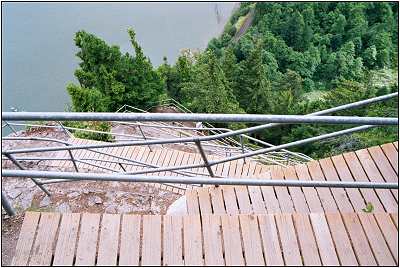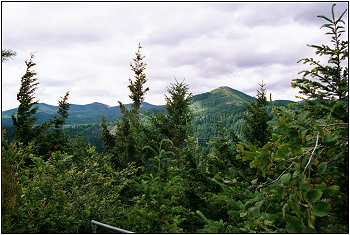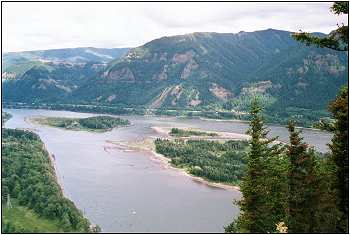












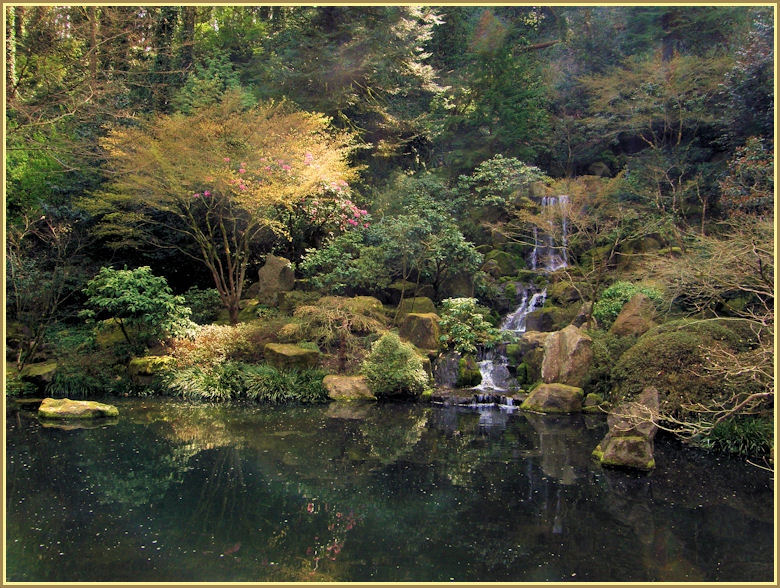




More of Don's
photo series.
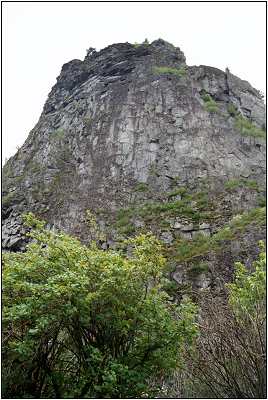
Beacon Rock
"Henry J. Biddle purchased the rock, in order to build a trail to the top, and constructed the original trail from 1916 to 1918. In 1935, his heirs turned the rock over to the state for use as a park. Additional development was done by the Civilian Conservation Corps." [Thanks to Gary Halvorson, Senior Archivist, Oregon State Archives, for the above link.]
The trail winds around and switches back and forth on its way to the top of Beacon Rock. That's the river below.
From the top you can see in all directions:
Beacon Rock, the exposed core of an ancient volcano, dominates the middle section of the Gorge. It stands 848 feet tall above the mighty Columbia, and in these parts is considered to be the second largest monolith in the world, next to Gibraltar.
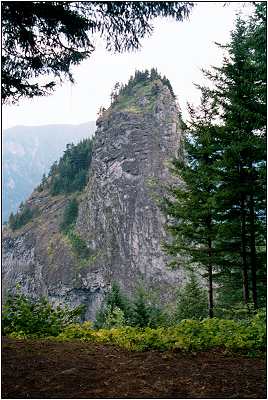
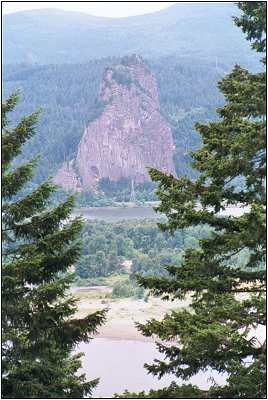
(from across the Columbia)From the Beacon Rock State Park Web site: "Beacon Rock served as a landmark for river travelers for hundreds of years. The Indians knew it marked the last of the rapids on the Columbia River and the beginning of tidal influence from the Pacific Ocean, 150 miles away. Lewis and Clark were the first white men to see the rock. They camped at its base in November of 1805, noting the rock in their journal and giving it its present name. In 1811, Alexander Ross, of the John Jacob Astor expedition, called the rock 'Inshoack Castle,' and it was known as 'Castle Rock' until the United States Board of Geographic Names officially restored the title of 'Beacon Rock,' in 1961.
